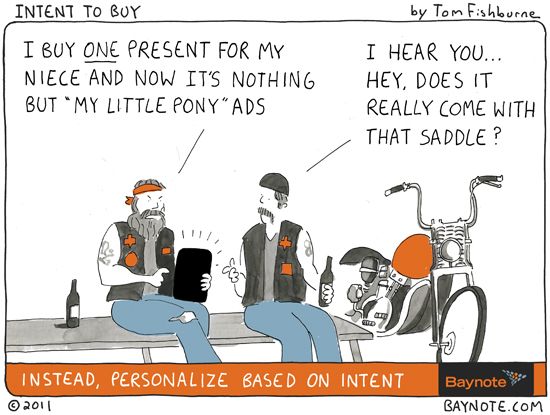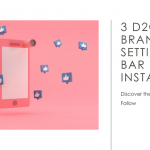While the COVID-19 pandemic did slow the economy down amidst a lot of problems, it also led to an e-commerce surge and accelerated digital transformation by 5 years. What was considered futuristic is now being experienced in the present and businesses who haven’t implemented them are considered outdated. This is because, with growing advancements, comes increasing competition that keeps brands on their toes to constantly adapt to this ever-changing playing field.
Even if your products are the best in the market with minimal competition, there are things that are needed from your end to make your products reach your target audience. And one such channel that can be the best choice for you in the current scenario is your social media game. But if you’re wondering “There are a lot of options like email and SMS marketing, why particularly focus on social media?” Here are some stats that should convince you.




Now that it’s clear why social media is important, let’s move on to how businesses can use social media not just for the sake of it but for its utmost potential. This is where the impact of digital transformation comes into play. With technological advancements happening throughout the e-commerce space, there are also several up-and-coming innovations in social media that businesses can take up to stay competitive. Here are some of them that are currently in the trend.
5 Ways Businesses Can Use Emerging Technology To Extract Value From Social Media
Businesses can leverage emerging technologies to extract value from social media in several ways:
1. Social Listening and Sentiment Analysis
In general terms, social listening is an extension of brand monitoring (where you can keep track of every social mention of your brand), along with each and every necessary social media conversation that includes products that you sell and competing brands.
Primarily insights from social listening are used to identify trends, customer pain points, and sentiment analysis on similar topics, all of which can be used to make data-driven decisions for improvement.
Sentiment analysis is a subset of social listening. While social listening monitors related mentions, sentiment analysis gives insights into the emotions surrounding those mentions and helps you pick the right context for your customers’ conversations.
For example, by understanding customer sentiments, trends, and feedback, you can work on identifying customer needs, improving products and services, and enhancing the overall customer experience.
If you’re wondering where to start, there are several social listening tools such as Hootsuite that you can make use of to do the research on your behalf.
2. Social Media Advertising
Social media ads are a really straightforward but great way for businesses to reach their target audience with relevant messages. With proper research and techniques, ads can be your most efficient option to generate leads, drive sales, and increase brand awareness.
But advertising isn’t just posting about your brand on social media, it has several depths to it that make it relevant. To help you understand things better, let’s look at the two trending forms of social media advertising for now.
Influencer Marketing: The lockdown phase was a blessing in disguise for a lot of individuals who began their careers as ‘content creators’, spending time on social media doing what they enjoy the most. With a fanbase growing for them, they grew into influencers relevant to particular industries. By collaborating with influencers, businesses can reach a wider audience, increase brand awareness, and drive customer engagement.

Personalized Marketing: With insights such as customer preferences, behavior, and interests, you can send out personalized messaging that caters to specific customers. With recent technological advancements and increased customer expectations, you have no option but to embrace personalization in your social media marketing tactics. Advertising campaigns that are tailored to the right customers help you create individualized experiences and spur more sales.

3. Social Commerce
Not just for advertising purposes, recent integrations have enabled social commerce, where shoppers can not just view but browse and shop directly from social media platforms.
Social commerce retail earnings are predicted to reach nearly $80 billion by 2025 in the U.S.
With shoppers spending a lot of time on social media for their personal stuff or for looking at brands, social commerce can be seen as the best option for businesses to enable seamless shopping experiences (where shoppers can directly purchase from social media sites without having to visit your website).
Not just direct selling, social commerce also enables:
- Social sharing – Leverage user-generated content to drive conversions and sales
- Customer engagement – Easy support interactions and insights into brand content performance, etc.

4. Chatbots
Social media has come a long way from just content sharing to AI-powered chatbots to engage with their customers across platforms like Facebook, Instagram, Twitter, and WhatsApp.
The purpose of these chatbots covers three essential parts of your business’ needs — customer service, customer engagement, and social media marketing. But using conventional techniques is just the bare minimum. With the help of automation, you can extend the capabilities of chatbots by a huge margin.
Let’s start with the most persistent problem of an e-commerce business, post-purchase issues, and customer queries around their order status. With over 40% of support tickets created around the post-purchase, it is understandable that customers are worried about their orders going haywire during the shipping and delivery phase.
But it doesn’t have to be that way. Instead of waiting for your customers to take the first step, you can take a proactive approach to engage with them regarding their order details from time to time. This simple action just stands to provide multiple benefits for your business by improving customer relationships and brand loyalty while reducing costs and the time taken.
5. Virtual Reality (VR) and Augmented Reality (AR)
Thanks to technological development over the past few years, VR and AR, classic science-fiction tools can be experienced today, in our lifetime. With fierce competition from multiple directors, e-commerce brands too couldn’t stay far from such technology and have started to use VR and AR primarily in advertising to create immersive experiences that can help businesses connect with customers in new ways.
- Virtual product try-on tools and augmented previews can be extremely beneficial for the apparel and accessories industry to convince customers who are sitting on the fence over the doubt of the product working out for them to go for the buy,
- Brands can partner with social media applications like Instagram to create filters that users can use for fun in their content. This can really boost your efforts to spread the word about your brand and increase engagement rates.
Overall, integrating VR and AR into social media platforms helps in engaging users, driving conversions, and providing unique and interactive shopping experiences.

Final Word
With growing technology, social media will continue to evolve. To keep up with the ever-changing conditions, you will need to adapt your strategies in order to consistently stay ahead of the curve.
In conclusion, by using techniques such as social listening, sentiment analysis, social media advertising, social commerce, VR and AR, etc, you can extract valuable insights, enhance customer engagement, optimize marketing efforts, reach new markets, and drive business growth in the digital landscape.







